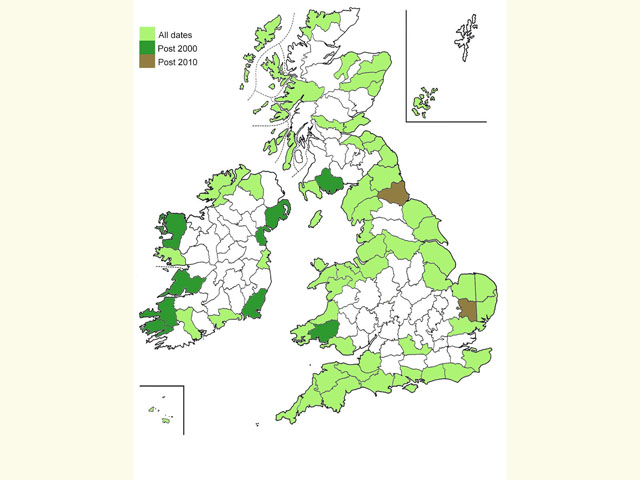Gelechiidae
35.131 Mouse-ear Groundling Caryocolum marmorea (Haworth, 1828)
Notable B
Similar species:
Forewing: 4.5 to 5.5mm
Habitats: Coastal sand-dunes. There are historic inland records from breckland, sand-pits and other warm sandy sites.
Habits: The moth is easily disturbed during the day. It comes to light.
Foodplant: The larva feeds on Common Mouse-ear or Little Mouse-ear. At first it makes an irregular upper surface mine following the margin or the midrib on a basal leaf and containing greenish-brown frass. It then mines a stem ejecting frass from the entry hole. It finally feeds from a sand-covered silk tube at the base of the plant while feeding on the lower leaves. It pupates in the larval tube. On the European mainland it is recorded feeding on Spanish Catchfly where it spins the terminal shoots and bores into the stem.

